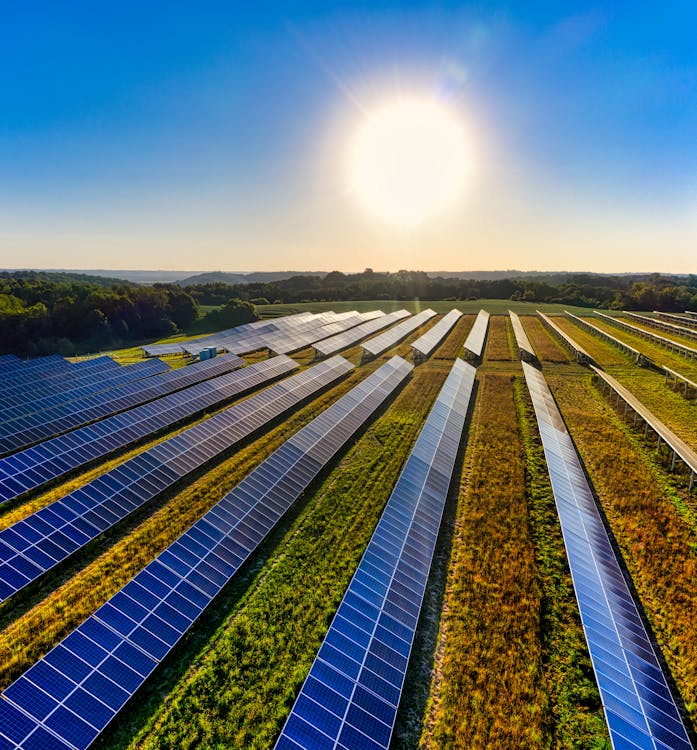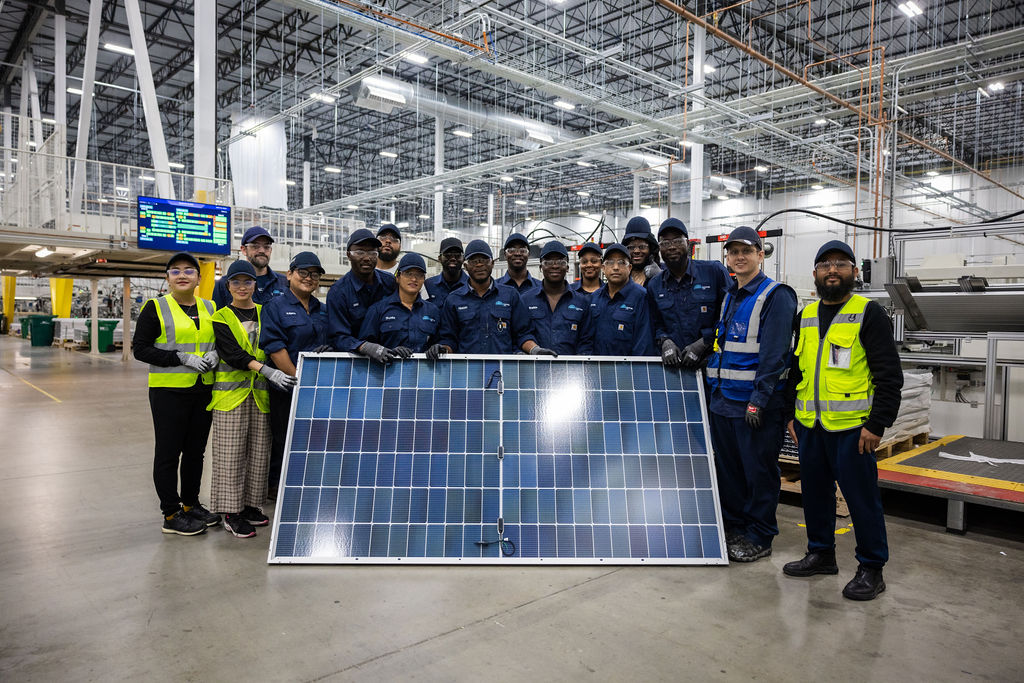The Main Principles Of Solar Panel Company
The Main Principles Of Solar Panel Company
Blog Article
Certified Solar Technicians PA: Our Firm Focuses On The Installation And Management Of Photovoltaic Energy Systems
History and Advancement of Photovoltaic Panel Companies
The beginning of solar panel business can be traced back to the 1800s when Alexandre Edmond Becquerel discovered the photovoltaic effect. Would he have envisioned how his discovery would revolutionize the method we harness energy?
Early Beginnings

In 1954, Bell Labs developed the first useful photovoltaic cell. This marked a substantial turning point in the history of solar power. They were initially used to power space satellites, however who knew this was just the start?
Advancement and Development
- In the 1970s, an energy crisis resulted in increased interest in eco-friendly energy sources, consisting of solar power.
- By the 1990s, developments in technology and increasing environmental awareness led to the growth of solar panel companies worldwide.
A New Period
As we went into the 21st century, the solar market saw a rapid growth. The demand for clean and renewable resource brought about a new period in the solar panel market.
Fascinating Truths
- The world's very first solar energy station was constructed in 1982 in Hisperia, California.
- By 2019, solar power had become the world's fastest-growing source of power.
The journey of solar panel business has been amazing, hasn't it? The future holds enormous capacity, with constant advancements leading the way for a sustainable future. Can we picture a world powered entirely by solar power?
Moving Forward
Today, photovoltaic panel companies continue to innovate, pursuing more effective and affordable solutions. The development of solar power has come a long method, and yet, the journey has actually simply begun.
The Core of Photovoltaic Panel Production
Ever question what enters into developing those shiny, sun-loving photovoltaic panels? The procedure is as impressive as the end item (Top Rated Solar Installers PA). High-purity silicon, the primary component in photovoltaic panels, undergoes different transformations to ensure its performance and toughness
From Sand to Silicon
Crystalline silicon, the foundation of many solar panels, originates from simple sand. It's a fascinating journey, isn't it? The sand goes through a high-temperature response with carbon to form silicon. Nevertheless, this isn't simply any silicon. The silicon utilized in solar panels is "solar-grade," with a pureness of 99.9999%. It's this pureness that makes it possible for the panels to efficiently transform sunshine into power.
Ingot Development
As soon as the silicon is pure enough, it's time to form ingots. Photo a big, round block of strong silicon. How is this achieved? Through a procedure called Czochralski procedure, where the silicon is melted and after that gradually recrystallized. It's a sluggish dance of science, resulting in a solid product that is practically as pure as the raw silicon itself.
Slicing into Wafers
The ingots are then sliced into wafer-thin pieces, like slicing a loaf of bread. Each piece is a possible solar cell, waiting to harness the power of the sun. Did you know that the silicon wafers are just about 200 micrometers thick? That's about half the density of a human hair! The process needs precision and patience, however the outcome is a set of wafers all set to be turned into solar batteries.
Developing Solar Cells
With the wafer ready, it's time for the magic to take place. The silicon wafer is 'doped' with other components like phosphorous and boron to produce an internal electrical field. It's this field that enables the conversion of sunshine into electrical energy. Complex, isn't it?
Assembly and Quality Control
Solar cells are like puzzle pieces that come together to form a solar panel. The cells are soldered together in a grid-like pattern, then covered with a protective layer of glass. The final step involves extensive quality assurance checks. It's essential that every solar panel performs at its peak, wouldn't you agree?
Expert Suggestion
Always keep in mind that even the most efficiently produced photovoltaic panel can lose efficiency due to dirt and particles accumulation. Routine cleaning can substantially enhance your panels' efficiency.
Comprehending the Environmental Impact of Solar Panel Companies
Ever considered the environmental footprint of a photovoltaic panel company? Green technology, such as solar, has changed our energy landscape, however what about the behind-the-scenes effect?
The Production Process: A Double-Edged Sword
The manufacturing process for solar panels requires a considerable amount of energy. This process, called 'em bodied energy', can be seen as a type of 'energy financial obligation'. It's a little like borrowing today's sunshine to power tomorrow's energy needs. However worry not, the energy repayment time is frequently much shorter than you 'd believe!
- The energy repayment duration for solar panels is normally 1-4 years.
- After this period, the energy produced is basically carbon-free.

Life After Decommission
And what takes place when a photovoltaic panel reaches completion of its lifespan? Can it just be tossed into the garbage? No, that would not be really green, now, would it?
A feasible solution is recycling. While photovoltaic panel recycling is still in its infancy, it holds a world of potential. Recycling not only keeps products out of landfills however likewise reduces the requirement for brand-new basic materials.
Responsible Sourcing: More Than A Buzzword
Where does the silicon originated from, you ask? The industry's need for silicon and rare minerals can lead to devastating mining practices. Responsible sourcing is therefore vital to decrease harmful ecological effects.
Decreased Carbon Emissions: The Larger Picture
Let's not forget the bigger picture: solar energy significantly decreases carbon emissions. When installed, solar panels produce tidy, renewable resource, balancing out their preliminary production footprint.
In short, the environmental impact of photovoltaic panel business is a complicated issue. However, with accountable practices, the pledge of a cleaner, greener future is well within our grasp.

Financial Performance and Market Share of Solar Panel Business
Ever wondered why some solar panel companies - Solar Panel Company beat others in the market? What sets them apart? The key lies in their monetary efficiency and market share
Financial Efficiency: An Important Indication
Financial performance plays a critical function in the success of any organization. For solar panel companies, it's no different. Strong monetary performance enables these companies to purchase cutting-edge innovation, research, and development, thus producing high-quality, efficient solar panels.
But how do they achieve this? With a concentrate on cost efficiency and strategic financial investments. Companies that manage to decrease production costs without jeopardizing on quality tend to fare much better in the market.
Market Share: A Step of Success
Market share, on the other hand, is a direct reflection of a company's popularity among consumers. A high market share implies more property owners are picking their photovoltaic panels over competitors.
What's the secret dish for gaining a bigger market share? It boils down to consumer complete satisfaction and brand reputation. Companies that focus on customer needs and preserve a favorable brand name image are more most likely to record a larger share of the marketplace.
- Client Fulfillment: Photovoltaic panel companies that deliver trusted items and exceptional customer support tend to have greater customer satisfaction rates.
- Brand name Track record: A strong brand name track record is developed in time through consistent shipment of quality product or services.
Financial Efficiency and Market Share: The Symbiotic Relationship
Surprisingly, the relationship between monetary efficiency and market share is get more info not one-sided. They feed off each other. A strong financial efficiency can increase a business's market share, while a high market share can enhance financial efficiency.
As a photovoltaic panel company, balancing these two aspects is crucial for long-lasting success. A company that neglects either of them may find it difficult to maintain its position in the competitive solar industry.
The Takeaway
So, what does all this mean for you? Whether you're a property owner wanting to set up photovoltaic panels or an investor considering the solar market, comprehending the monetary efficiency and market share of solar panel companies is essential. They are key indicators of a company's health and capacity for future development.
Report this page